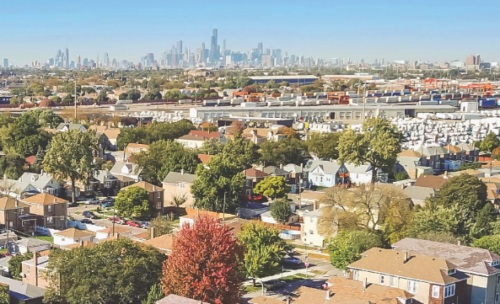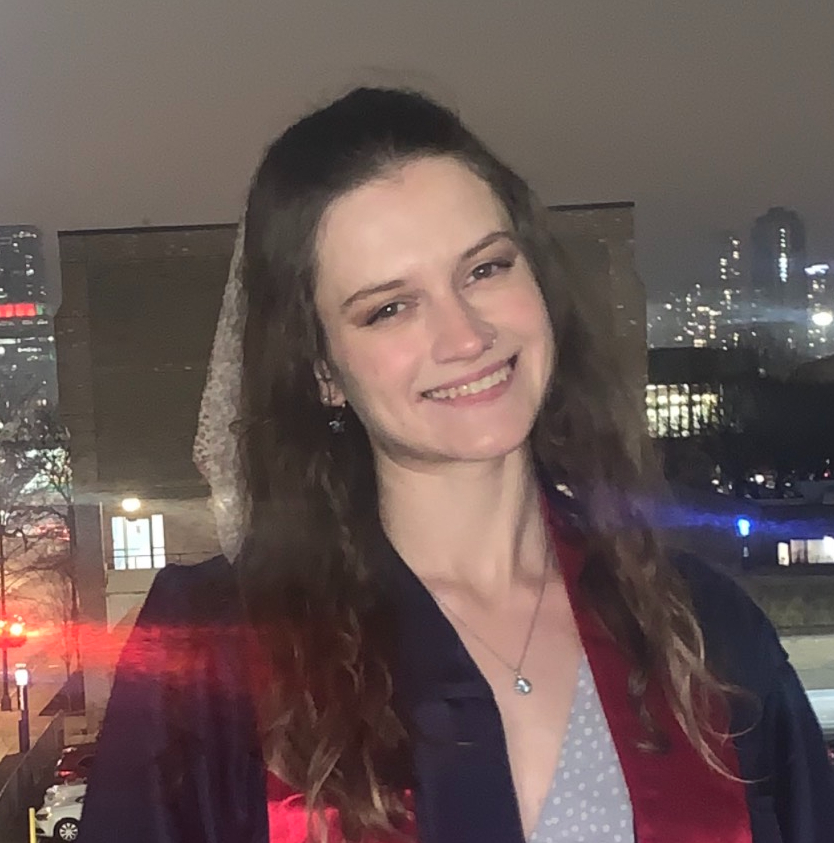
By Annie Delfosse
Thanks to a $25 million grant awarded by the Department of Energy, Chicago neighborhoods are set to be the focus of an upcoming climate study like none before it. The University of Illinois at Chicago is one of several institutions partnering with Argonne National Laboratory to conduct a five-year, city-based climate study named CROCUS: Community Research on Climate and Urban Science. UIC is backed by $5 million of the grant, making the school the largest contributor to the project.
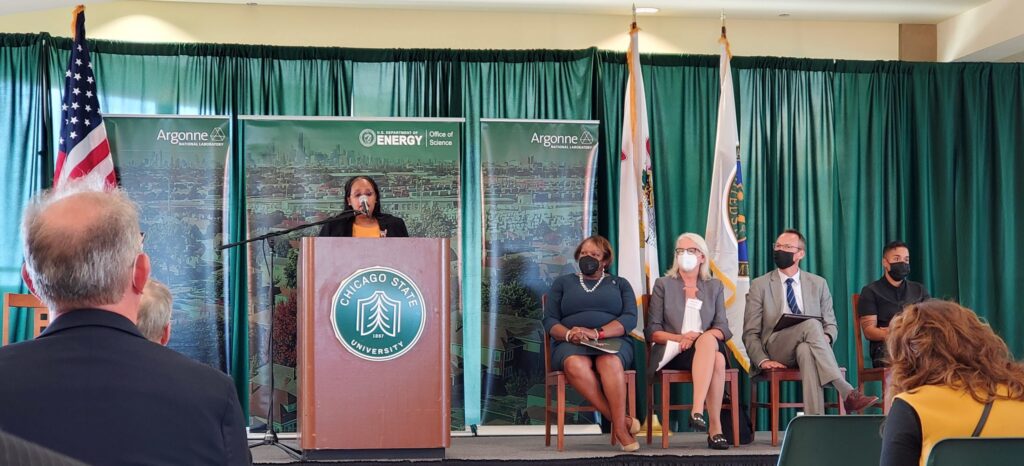
Dr. Asmeret Asefaw Berhe, Director, Office of Science, U.S Department of Energy Photo: Argonne National Laboratory
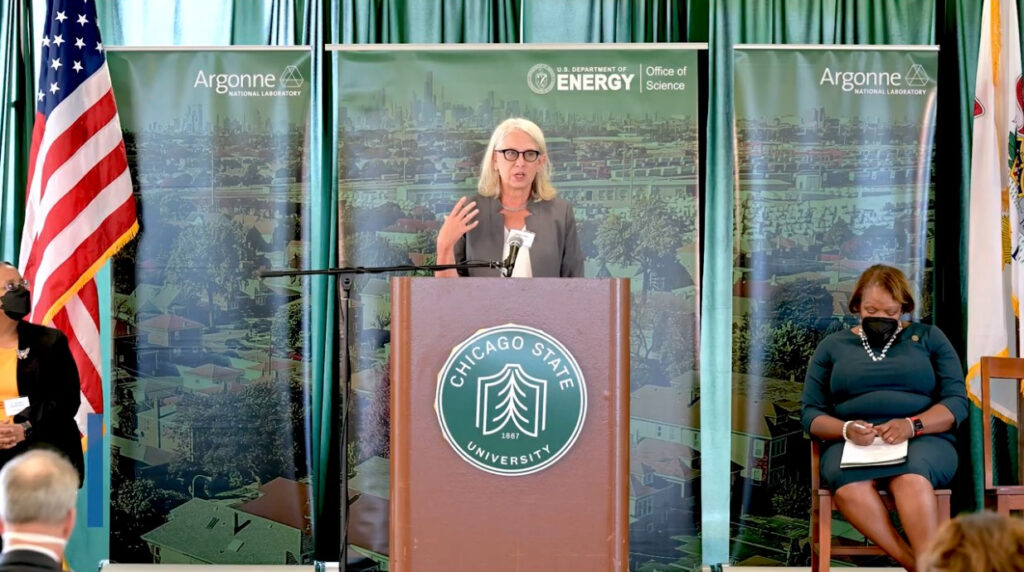
Christina Negri, Director, Environmental Science Division, Argonne National Laboratory Photo: Argonne National Laboratory
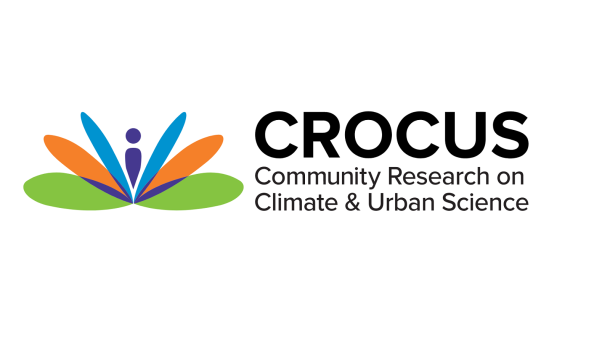
CROCUS Project Logo Photo: Argonne National Laboratory
Ralph Cintrón, a professor of English and Latin American studies, is co-principal of the UIC chapter of the study. Cintrón himself is not a scientist, but is involved in ethnographic work, urban research and is a rhetorical theorist. “This study is very definitely in the humanities and rhetorical sector,” he says. “There are also the urban and ethnographic components which lean toward the social sciences, and my profile.”
Cintrón explains that the Department of Energy wanted communities to be involved- particularly underserved communities. In the grant proposal, neighborhoods suggested for involvement included Humboldt Park, Woodlawn and Chatham. Some organizations from these communities are now involved in the study, including Blacks in Green, the Greater Chatham Initiative, Puerto Rican Agenda, and Metropolitan Mayors Caucus. Input is going to be sourced from these communities in order to identify specific urban need areas for climate study that are relevant to residents. “In Chatham, for example,” Cintrón says, “one of the big problems is extensive flooding. Everyone is interested in whether flooding is set to get even worse in a place already known for bad floods.”

Professor Ralph Cintrón Photo: University of Illinois at Chicago
This project is different from previous climate change studies because of its unique neighborhood-specific model. “Broadly speaking, cities have basically been left out of climate models,” Cintrón says. “When you look at all of the climate research that has been done, it typically covers huge spans of the earth: the amount of carbon dioxide in the atmosphere, methane concentrations or the rising of sea levels. Those issues have all been studied and documented to make predictions for the future, but that work has not gotten down to the level of cities. Cities have been left out of that conversation.”
As it stands, there is not much currently known about climate change in relation to specific urban neighborhoods. This project aims to measure what is happening at the level of cities and the impact on climate for the first time. Cintrón offers a few examples of what this study entails. Cities are composed of high levels of cement and concrete, which impact heat and make the air column above a city hotter than the air above a forest. Green spaces will also be studied around the city to measure how these areas work to cool the immediate atmosphere by comparing them to neighborhoods without much green space. The city’s rain patterns, temperature patterns and soil conditions will be studied.
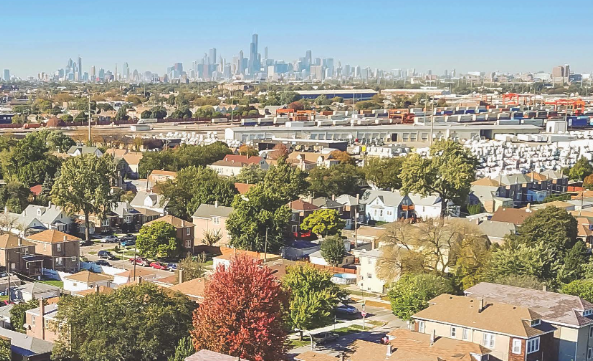
Shot over multiple Chicago neighborhoods Photo: Argonne National Laboratory
On an even narrower scale researchers will work to determine how climate impacts different communities. They will look at, for example, how a torrential downpour affects poorer neighborhoods than an area such as Lincoln Park. Questions will align with- does Lincoln Park have better drainage than Humboldt Park? Is Lincoln Park cooler because of an extensive tree canopy compared to a neighborhood that has less trees? The majority of this data has not been previously tabulated or well documented, yet they have consequences for the quality of life in various neighborhoods.
Everyone on the team carries a different role. There are top notch, experienced climate scientists with different specialties- some are documenting CO2 concentrations, methane levels and temperature data with specialized equipment, some are studying whether Lake Michigan is warming at a rate different from other Great Lakes, and there are individuals studying tree canopies by measuring how much radiation from the sun is absorbed by leaves. There are researchers who have expertise in general energy, which may be helpful at some point in thinking of solar panel rays that might be established. The team consists of climate and environmental scientists, some biologists, and then those who are interested in the socioeconomic frame of the study like Cintrón.
This is not UIC’s first involvement with climate work. Ten years ago, Cintrón, along with a small group of colleagues, received an award from the Mellon Foundation. It was then that he worked on his first organized research study with ten faculty members and ten graduate students, as they could not recruit any scientists to join them at the time. “My interest was not only in climate change’s relation to a huge change in our economies and our daily lives, but also the fact that it might represent a real change in our political and legal structures,” Cintrón says. Climate change poses a real issue to commerce and the sustaining of a prosperous economy.

University of Illinois at Chicago Campus Photo: University of Illinois at Chicago
Cintrón shares that in recent years there was talk about creating a climate change study minor in the College of Liberal Arts and Sciences, which got the attention of individuals involved in earth sciences, biology and chemistry, and more specific climate change science. “That was when we really started talking to each other,” Cintrón says. “After a couple of years we saw some opportunities to work with Argonne National Laboratory, because some of our scientists were connected with them and they were pursuing grants with the Department of Energy and sought folks who were familiar with communities, as I am. So, our networks grew larger and larger from UIC faculty to Argonne Scientists.”
Students have been involved as well. Last summer, faculty took eight students to the island of Puerto Rico for a study abroad project. There, they discussed conditions post-Hurricane Maria, talked to climate scientists, and talked to politicians and mayors of different cities to gain a grasp of the island’s current state. Puerto Rico is a vulnerable site for problems, many being the impact of hurricanes. Cintrón says that these conversations were in context with the UIC course, but it did not feel like an academic trip- it felt like something much larger. The school plans to offer its first climate change specific course in the spring of 2023.
It is this dedication to climate study that has earned UIC the top-ranked site. Three awards were made from the U.S Department of Energy- to a site in Texas, a site in Massachusetts, and then to the UIC and Argonne study. Other institutions are involved, but UIC is the lead university involved that is taking charge of the project. Cintrón says, “In terms of this sort of work, UIC is right at the very top in terms of being a competitive place for this kind of research. Argonne is driving the study, but UIC has a major, major role as the lead institution.”
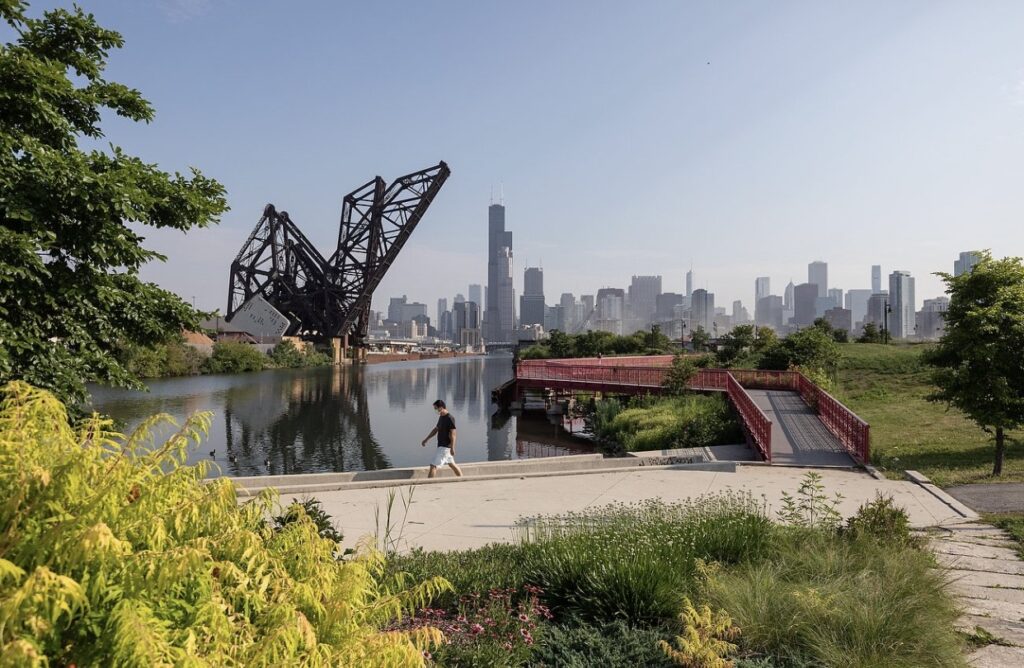
Shot of the Chicago skyline Photo: University of Illinois at Chicago
Findings will help researchers and officials work together towards a more sustainable, more equitable environmental future.
To learn more about the CROCUS urban climate study, visit: https://www.anl.gov/crocus/about



